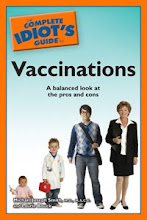A 2009 study published in the Archives of Internal Medicine found that about three-fourths of teens and adults in the U.S. are deficient in vitamin D, as are 90% or more of African Americans and Mexican Americans. This is bad news, because vitamin D might help protect against a host of modern ills, including osteoporosis, heart disease, cancer, and dementia. Equally disturbing, though, is the controversy over how to get enough vitamin D.
Your body can get vitamin D from sunlight, certain foods, or dietary supplements. To help prevent skin cancer, though, the American Academy of Dermatology recommends that everyone avoid sun exposure as much as possible, and use sunscreen and protective clothing. Some people, however, believe that high rates of vitamin D deficiency are a result of too many people following these recommendations. Others believe that dermatologists have exaggerated the threat of skin cancer in order to attract more patients.
Earlier this month, for example, a Huffington Post blogger posed as a patient and visited several San Francisco dermatologists, covertly (and illegally) recorded his conversations with them, then criticized their recommendations on removing moles and avoiding the sun. The blogger accuses dermatologists of (among other things) scaring people into getting moles checked out or removed, then trying to upsell them cosmetic skin procedures. The flaws in the blogger's argument, including his questionable ethics, were called out by doctor and blogger Peter Lipson.
Sunscreen itself came under attack earlier this spring, when the Environmental Working Group came out with a report that condemned almost all the sunscreens currently available. The EWG stated that some sunscreens might actually contribute to skin cancer rates. Sunscreens that are inadequate, or inadequately applied, create a false sense of safety in the sun and increase sun exposure, says the EWG. Some sunscreen ingredients, such as retinyl palmitate or oxybenzone, might cause skin cancer or other problems as well.
The EWG's recommended sunscreens use the minerals zinc or titanium to block the sun. Alternatively, you can use sun-protective clothing and hats to provide protection. That's my preference; I'm a fan of the Sun Precautions line of clothes.
It's hard to know exactly how much vitamin D you need as well. Current recommendations range from 200 to 1,000 IU (international units) or more per day, depending on your age, gender, and other factors - such as what health source you consult.
The National Institute of Health's Dietary Supplement Fact Sheet on Vitamin D, for example, suggests 200 to 600 IU daily. The National Osteoporosis Foundation increased this recommendation to 800 to 1,000 IU daily for adults 50 and over. For people at risk for heart disease, a study released in March suggested that they should talk to their doctors about taking up to 1,500 to 5,000 IU daily, even though this exceeds the currently recommended daily maximum of 2,000 IU for adults.
Fortunately, the Institute of Medicine is currently wrapping up a two-year study of vitamin D and calcium recommendations. Their results should be available in October or November. Meanwhile, I'll stick with sun safety, a moderate amount of vitamin D supplementation, and a diet that includes D-rich foods (such as oily fish; D-fortified milk, orange juice, yogurt, and cereal; and egg yolks).
Subscribe to:
Post Comments (Atom)




No comments:
Post a Comment